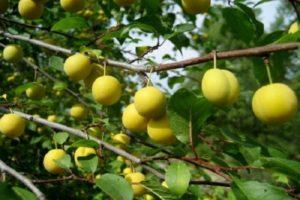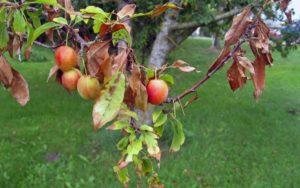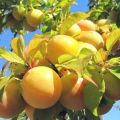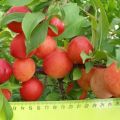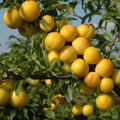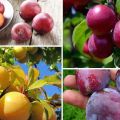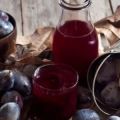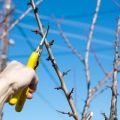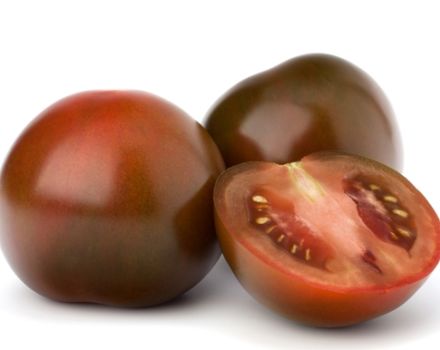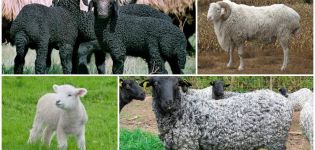Planting and caring for plums in the Leningrad region, which variety to choose
The Leningrad Region is a region of our country with a cold, changeable climate. You can grow fruit orchards here, it is important to choose the right varieties and types of fruit trees. Plum is a stone tree adapted to the weather conditions of the northern regions. To get a decent harvest, you need to know the nuances of growing plums in the Leningrad Region: the planting system, zoned varieties and the rules for caring for plum orchards in the north.
Difficulties in growing plums in the Leningrad region
The Northwest Region has a specific climate and peculiar soils. Of the fruit trees on the territory of the Leningrad Region, only cold-resistant zoned varieties take root. The work of breeders is ongoing, and every year new and improved types of plums are created.
The best varieties suitable for the region
Many varieties have been bred for the Leningrad region. The same varieties take root well in the Urals in the Volga region, they are resistant to temperature extremes, prolonged cold snaps and winter hardiness. The best plum varieties for the Leningrad Region are popular among gardeners in other regions.
Ochakovskaya yellow
Delicious variety of plum, characterized by increased care requirements. Productivity is average, frost and temperature changes can hardly be tolerated, prefers a southern climate. The fruits are prone to cracking and fall off in windy conditions. For commercial purposes, Ochakovskaya yellow is not grown, the culture needs pollination from neighboring plum trees. It does not bear fruit every year.
For all its shortcomings, Ochakovskaya yellow fell in love with gardeners of the Leningrad region for the unusual juicy sweet taste of ripe fruits, trees are easily propagated by cuttings.
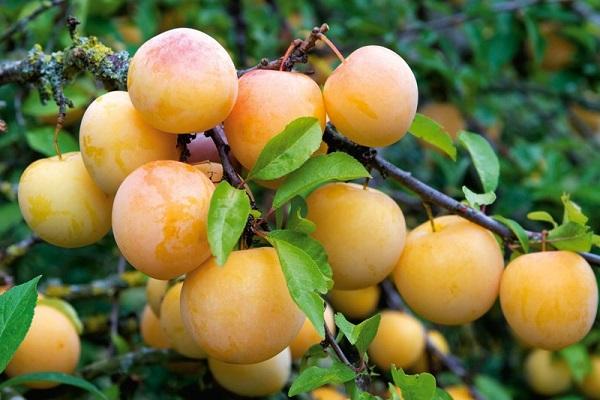
Kolkhoz renklode
A variety tested for decades, which has not lost its popularity among gardeners of the Leningrad region. The collective farm Michurin Ivan Vladimirovich created Renklode by crossing the blackthorn (wild plum) with Green Renklode. As a result, the plum has inherited excellent frost resistance and resistance to temperature fluctuations.
Stable yield and early maturity are the distinguishing features of the collective farm Renklode. The only drawback is the shedding of the fruits when the plum is overripe.
Gift to St. Petersburg
Hybrid cherry plum, zoned for cultivation in the Leningrad region in the late nineties.From the genetic advantages of the Gift to St. Petersburg, high yield, disease resistance, frost resistance are distinguished. The tree is able to quickly recover from mechanical damage.
The main disadvantage is the inability to self-pollinate.
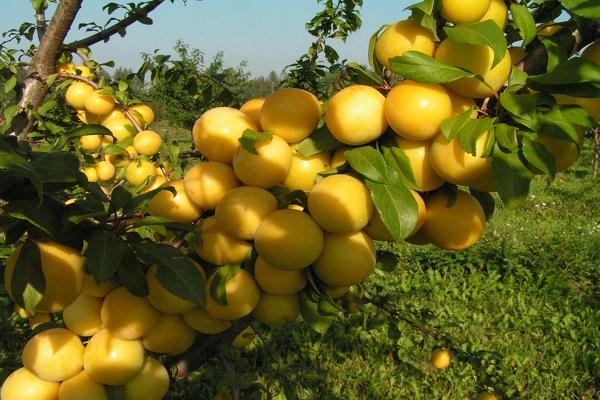
Etude
An improved mid-early variety of plum with increased winter hardiness. The first harvest of a plum orchard will bring in the fourth year of life of young seedlings. The study belongs to the self-fertile varieties of fruit trees.
The purpose of the variety is table-technical, excellent for growing on personal backyard plots. Does not require special additional shelters in winter. Resistant to fungal diseases and pests.
Early ripening red
It has been grown in the Leningrad region since the late forties. Early ripening red is a beautiful variety of plum trees, a small neat tree adorns the landscape of personal plots. Withstands frosts down to -38 C, the variety is self-fertile, unpretentious, tolerates both drought and waterlogged soil with dignity.
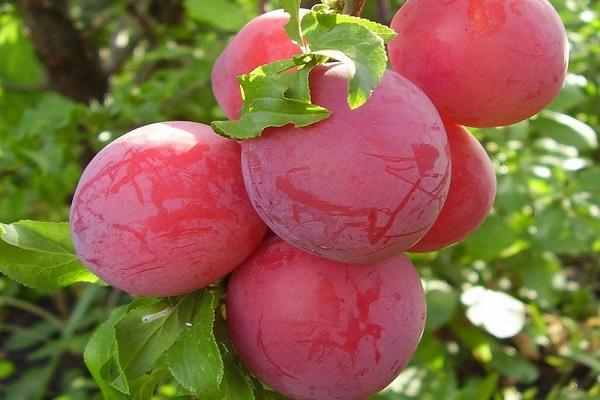
Early ripening round
The variety belongs to the Leningrad selection and was bred specifically for this region. The advantages of Round Ripe include early ripeness, high taste of ripe fruits. The endurance of frost and temperature changes is average; in harsh winters, trees can completely freeze out. Companions are required for pollination, Skorospelka is a round self-infertile variety.
Emma Lepperman
Plum variety of German selection, popular in the Baltic States, Poland, where it is grown commercially. Emma Lepperman has taken root well in the North-West region of our country, requires cross-pollination, has a high yield. The nuance of care - trees need systematic pruning. In the West, the variety is considered one of the most profitable.
Edinburgh
High-yielding English winter-hardy columnar plum variety. The tree is genetically resistant to clasterosporiosis, self-fertile. The taste of ripe fruits is sweet and sour. Suitable for growing in the Leningrad region.
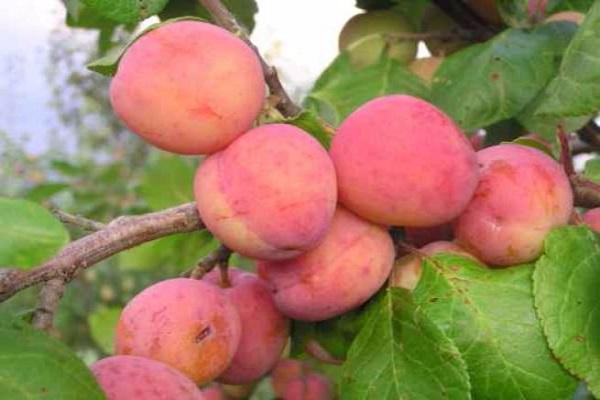
Oryol dream
The representative of the Far Eastern selection is the Chinese garden plum. Young seedlings bear fruit in the third year of life. The variety is partially self-fertile, frost-resistant, and tolerates drought. The disadvantages include the gradual grinding of the fruit.
The popular name of the Oryol Dream is tricolor, because of the peculiarities of the flowering of plum trees.
Volga beauty
A variety of the Samara selection, grown everywhere: in Central Russia, the Volga region, the Leningrad region and other regions. The greatest harvest is achieved in the southern regions of cultivation, the tree is thermophilic, demanding on lighting. It tolerates drought well, gives a good harvest. Plum is most vulnerable to frost during the flowering period.
With excessive moisture, the fruits crack, the fresh storage period of the crop is limited.
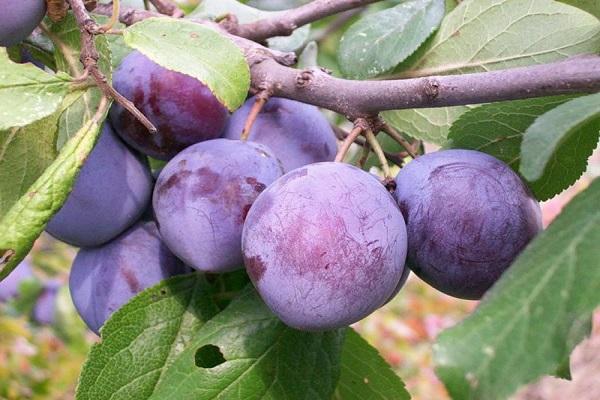
Alyonushka
Chinese plum of Oryol selection. The winter hardiness of the plant is average, but the trees are able to withstand temperature fluctuations in the spring-autumn period. The yield is small, but the tree bears fruit every year. The variety is genetically resistant to perforated spotting and moniliosis.
The disadvantages of Alyonushka include the predisposition of trees to the defeat of aphids.

Landing rules
Leningrad Region is the northernmost region of our country, where it is allowed to grow stone fruit orchards.
It is recommended to plant young seedlings in early spring. Preparatory work is carried out in advance:
- Choose a sunny place without drafts.
- The soil is carefully dug up within a radius of one meter at the rate of the hole width of 90 centimeters.
- They dig a hole 60 centimeters deep and apply a mineral-organic complex of fertilizers.
As top dressing, a mixture of humus, peat, sand and wood ash, mixed in equal proportions, is added, you can add a handful of urea.
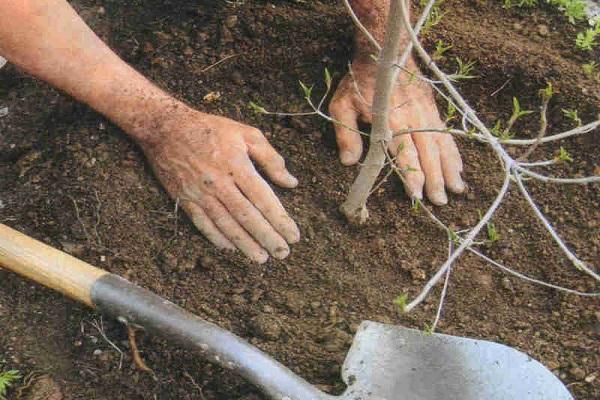
Next, start planting seedlings. The planting scheme for different varieties of plums will differ: from 1.5 meters between plants, up to 3 meters. The distance between the rows in the orchard is 5-6 meters.
The roots of a young tree must be carefully spread and pressed by hand, the hole should be evenly covered with soil and pressed, then the plum must be watered and the trunk circle must be mulched. You can use sawdust or freshly cut grass.
On a note! For some varieties of plums, you can use an additional support in the form of a peg located on the north side at a distance of 15-20 centimeters from the tree trunk.
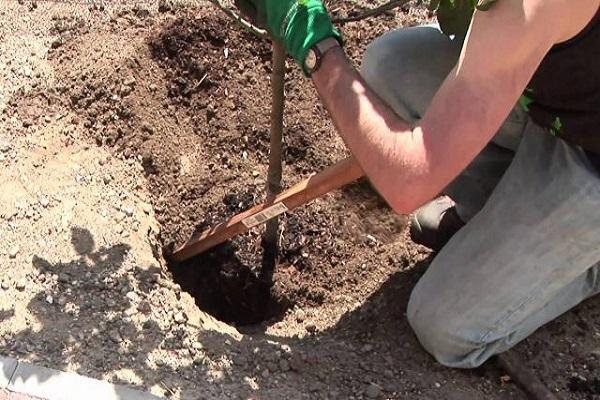
Care features
Orchard care includes:
- Irrigation system.
- Regular feeding.
- Treatment for diseases and pests.
- Pruning branches (for some varieties).
Most plum varieties do not like excess moisture and can easily tolerate drought. But prolonged drying of the soil can affect the taste of the fruit and the health of the plant itself. When the weather is hot for a long time, it is recommended to water the fruit plantations at the rate of 50 liters of water per plant.
Note: By the appearance of the fruits, one can say about the level of soil moisture: if the fruits are cracked, the plum does not have enough moisture, if the leaves of the tree actively turn yellow and the top dies off, then stagnation of water at the roots of the plant could form.
Excess moisture is especially detrimental to plants during the growing season, with an abundance of rain during this period, special moisture-wicking grooves are made in the near-stem circle.
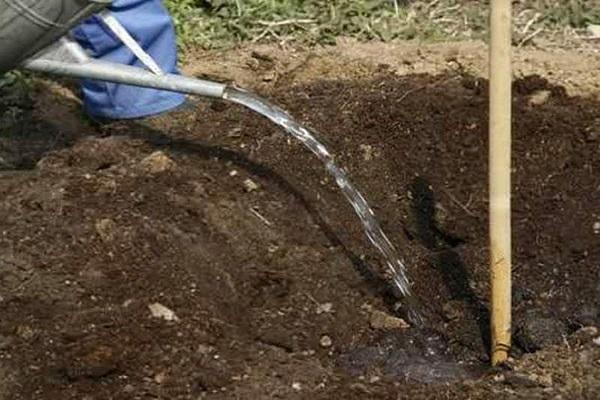
Of the fertilizers, the plum needs fertilizing with phosphorus, nitrogen and potassium. Superphosphate or urea mixed with organic fertilizers is a necessary fertilizing for trees at various stages of growth.
When caring for plum plantings, you need to pay attention to the nuances of a certain variety: some trees need pollinator companions, require pruning or additional shelter for the winter.
The first pruning of plums is carried out in early spring, this thinning is called sanitary. The main task is to remove frost-damaged, diseased branches. During the summer, the root shoots of the plum are removed, taking away the strength from the tree. Places of sawn branches are covered with garden pitch or clay.
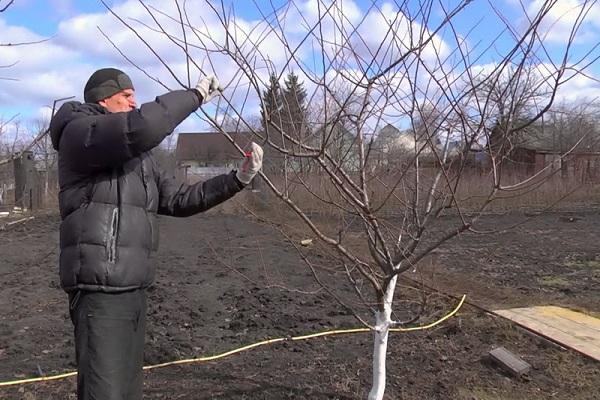
Diseases and pests
In the Leningrad Region, plum orchards are vulnerable to the following diseases and pests:
- Moniliosis. A fungal disease that affects flowers, buds, branches and trunks of plums. On the bark of trees, gray growths form, the shoots acquire a brown color, look burnt, the leaves turn black and fall off.
- The formation of gum on the trunks and branches of plants. Fruits may become infected. On the plums, a kind of caked droplets appear, resembling resin.
- Rust is a fungal disease that manifests itself in the form of brown spots with a yellow border, the plant loses strength, growth slows down.
- Clasterosporium or perforated spotting - the fruits of the plum are strewn with black and gray spots, over time, the trees begin to gum.
- Aphids are parasitic insects that live off trees and feed on its sap. Colonies can completely destroy crops.
- Gall mite - lives on the leaves of trees, feeds on tree sap. Affected leaves turn yellow and fall off, all metabolic processes are suspended.
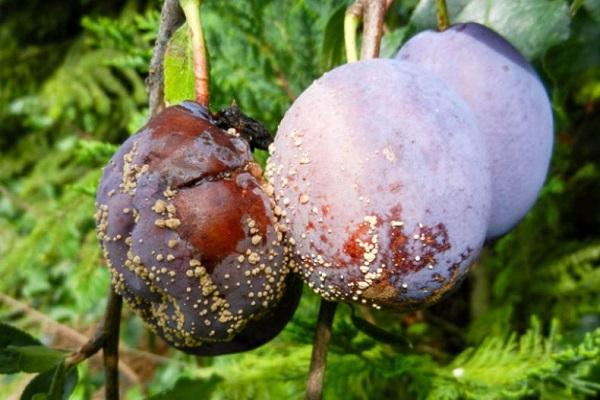
To combat insect pests, insecticidal agents are used: "Aktellik", "Aktofit", "Iskra", "Aktara". Fungicide treatments are carried out against fungal diseases, damaged parts are removed and burned.
For the best resistance of fruit trees to diseases, it is recommended to select zoned, genetically resistant varieties to infections of plum ailments.
As a preventive measure against infections, it is recommended to bleach the trunks with lime at a distance of 1.5 meters from the root of the plant.
Do not carry out treatments with insecticides and fungicides during the fruiting period. The fruits will not be edible. The main stages of processing: early spring (period of budding), a set of buds, flowering, autumn processing (after fruiting).
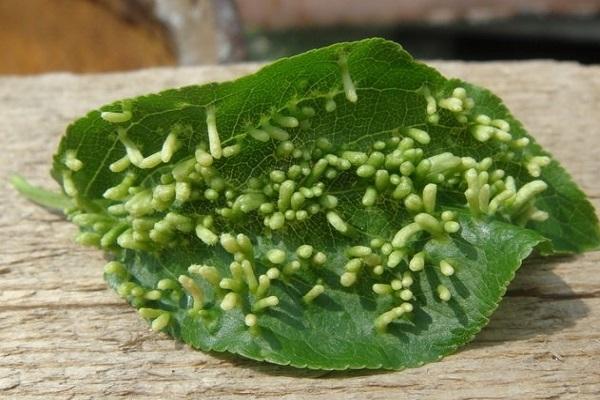
The Leningrad Region is a northern region with a changeable climate, but it is possible to grow orchards here. When growing plums, gardeners should take proper systematic care of the plants, choose available proven, zoned varieties and spray trees against pests and diseases. Some varieties of plums need additional shelter for the winter.
